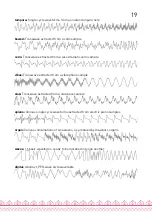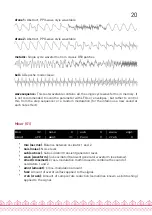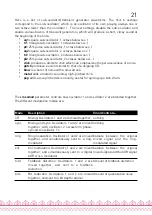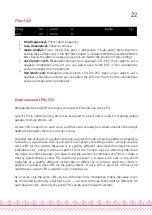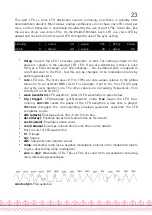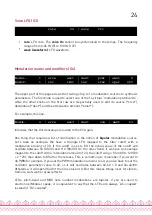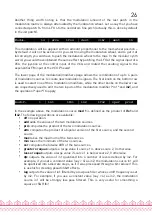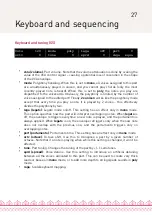
Synthesis
Finally, let’s get to the real thing! Each voice of Ambika is built according to the diagram
drawn below. Obviously, it would be tedious to edit the settings of each individual voice…
Instead, you edit parts and all the voices assigned to a part automatically inherit its
settings!
Here is a day (or rather a millisecond) in the life of a voice’s signal:
1.
The oscillators 1 and 2 generate digital waveforms, which are digitally combined
together using one of the following operations: mix, sync and mix, multiply (ring-
modulation), xor, mix and fold, mix and bit-reduce.
2.
The sub-oscillator (whose pitch is linked to oscillator 1’s) is added.
3.
The click generator generates a short transient/click at the beginning of the note. Note
that the sub-oscillator and the click generator cannot be used at the same time. It’s bassy-
beefy or clicky, not both.
4.
The output of the modulator, the sub-oscillator/click-generator and a controllable
amount of white noise are summed together. You can adjust the balance of each
ingredient.
5.
A controllable amount of fuzzy overdrive is applied to the signal. The resulting signal is
sample-reduced by a controllable amount.
6.
The resulting signal is converted to the analog domain by a 12-bit DAC and fed into an
analog VCF and VCA.
Each of these sound generation and modification modules have parameters which can be
controlled by any of the modulation sources listed below. However, some connections are
already “hardwired” (or rather “softwired” in the firmware):
•
The oscillators’ pitch always tracks the note played on the keyboard. However, this
can be disabled by applying a negative modulation (amount: -63) from note to
oscillator pitch.
•
The filter cutoff frequency always tracks the note. Again, this can be disabled or
attenuated by applying a negative modulation from note pitch to cutoff frequency.
The rationale behind this choice is that most of the time, you want 1:1 tracking, so
this frees up a slot in the modulation matrix for something more interesting!
•
Lfo 2 and Envelope 2 are always connected to the filter, their modulation amount
being controlled by dedicated parameters on the
filter
page.
12



















